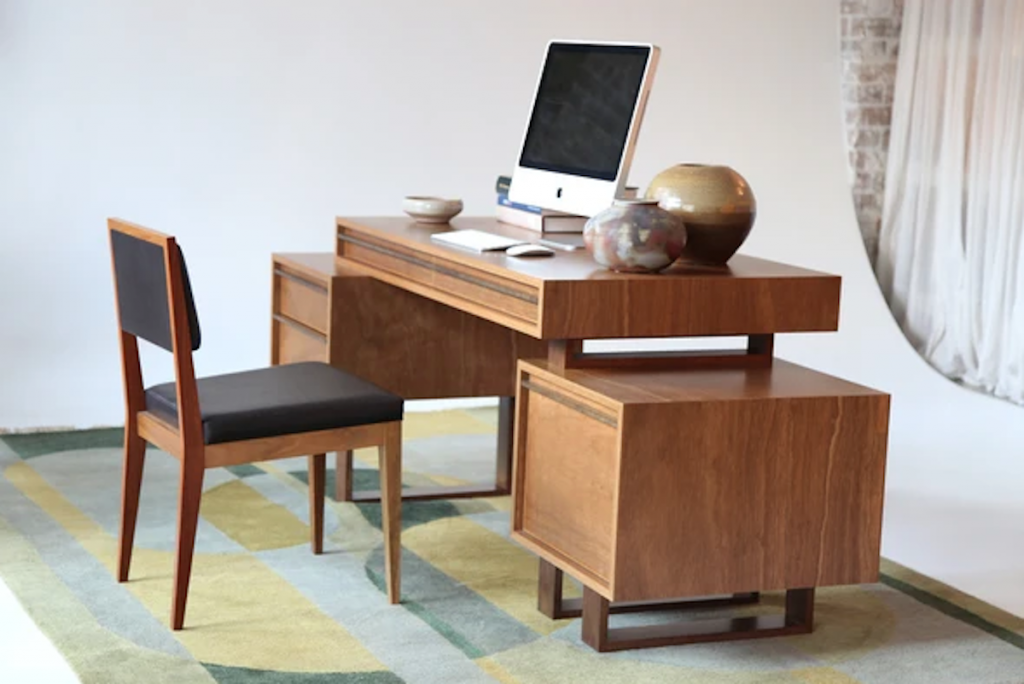Furnishing your home with designer timber furniture makes for beautiful living spaces and stylish surroundings. Getting your hands on premium designer furniture to complement your interior is both exciting and refreshing, here’s all you need to know to get started on your dream living space.
Create a vision
Often the most fun and creatively demanding part of the process is getting an idea of what your space will eventually look like. While it’s fun to go wild, keep yourself on track by making changes that you know will work in line with your budget and what is already there. Taking out a wall in your house might seem appealing but finding more subtle ways of increasing space in your home may be easier on the budget. Most importantly, know what you want to achieve, then work towards that goal creatively and intuitively.
Choosing the right wood
Sourcing the right timber is an important step in the design process. Handpicking locally sourced Australian timber furniture has its benefits. Being a local tree, the timber is accustomed to the climatic conditions of your home, especially if it’s an outside table, you’ll want to know the wood is up to scratch. Australian timber is a premium, sustainable material that is both durable and reliable. Designer timber furniture is made to stand the test of time, and local artisans with years of experience ensure the highest standards in the industry.
Colour and texture
Having an understanding of the colours and textures that are already in your home, such as on the walls, ceilings, and doors will most likely influence what type of wood you end up using. A darker Jarrah will have a very grounding effect and soak up light, whereas a Tasmanian Oak will lift the space through its lighter more subtle hue. Contrasting lighter timber like Marri with darker, metal fittings or ornaments creates a beautiful balance between the natural and artificial. Likewise pairing darker timber with white painted beams or chairs creates a contemporary feel.
If you’re going for a raw, minimalistic feel, perhaps with exposed wooden beams or simple, straight lines you may prefer more uniform textures and lines.
Knowing what works and what doesn’t is hard to think about in abstract terms. Adding colours to your mood board and referring to your plans as you go will ensure all your design choices are harmonious. Remember there isn’t one rule book for design, it’s up to you to find out what works best.
Maximising space and light
It’s good to think about what parts of the space are important to you. Consider the areas of your interior you find yourself using most, especially the ones that get neglected. It’s often those forgotten spaces that would benefit most from your new design. Choosing furniture that maximises space by not overcrowding walkways or creating awkward ‘leftover’ space will contribute to the overall effectiveness of your interior.
Designer timber furniture has a natural earthiness to it, no matter the type, so maximising natural light is crucial in maintaining a balanced space. Too much timber and not enough light starts to feel like a cellar room. Let it in wherever you can.
Make your interior work for you.
Good interior design is a perfect balance of practicality and beauty. Style is the result of these two facets being at their optimum. Keep that in mind when curating your space. The perfect interior is a functional space. From moving around, from the kitchen to the dining table, from there to a lounge, the spaces in between should flow easily and without obstruction. If you often find yourself having breakfast in the kitchen area, making the space suitable for this will make the interior work for you and not against you. Choose designer timber furniture not just because it looks good in a showroom, but because it helps your space work for you.
Take ownership of your space
Often overlooked in the design process is the final act of taking ownership of your space. Whether it’s a personal touch, a colour accent, or a family heirloom, making the space truly yours is the final step to making your interior design work pay off. Making a statement with your choice of bespoke Australian timber furniture is the bread and butter of a solid space, finishing it off with something personal makes it top class. Changing the space and shifting furniture after you’ve finished is completely natural. Your final master plan often ends up being just another prototype. When everything is in place, you’ll naturally want to shift things again, and again. That’s the beauty of interior design: it’s always a work in progress.




